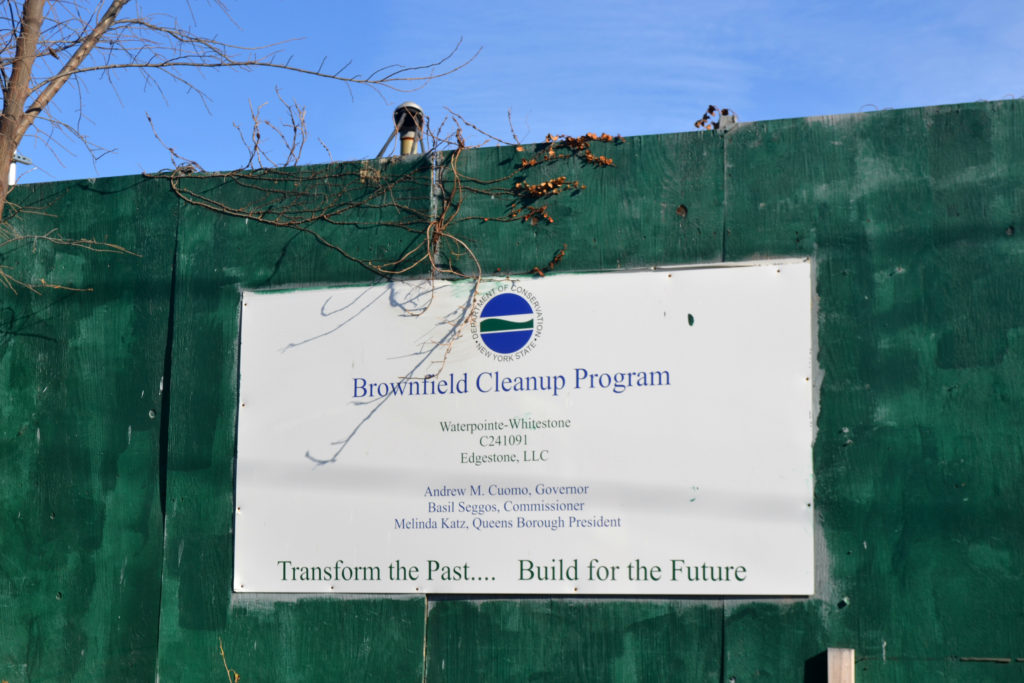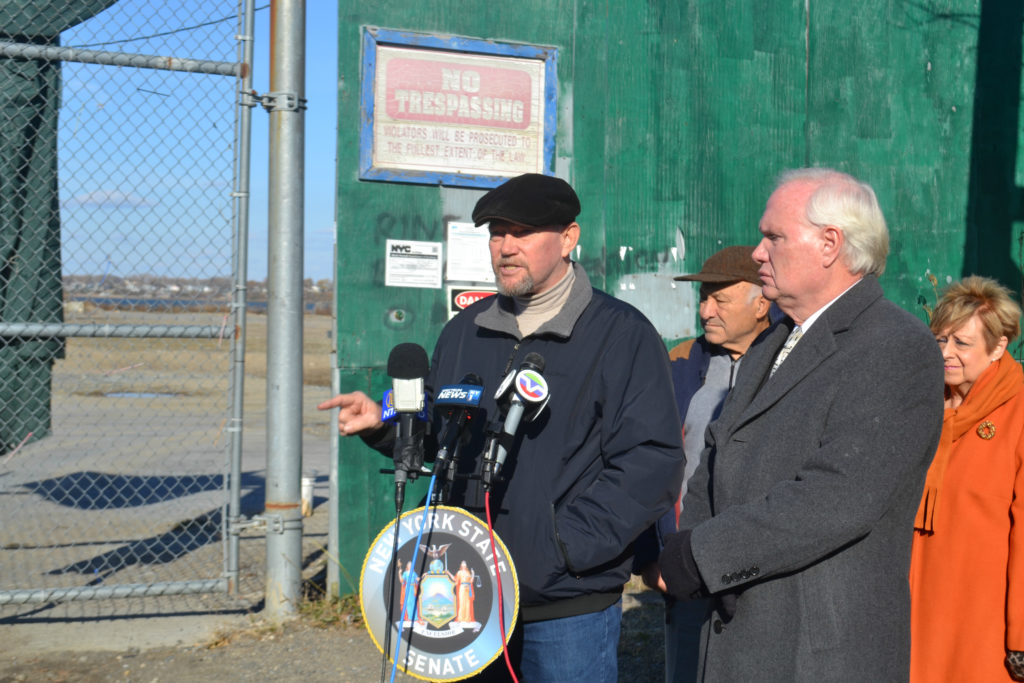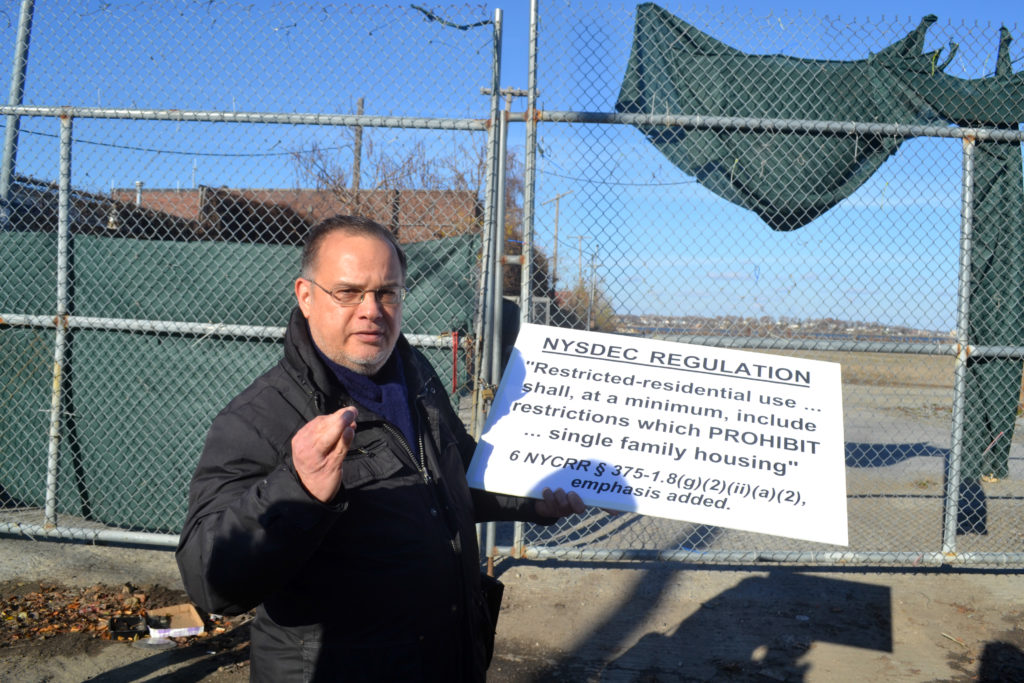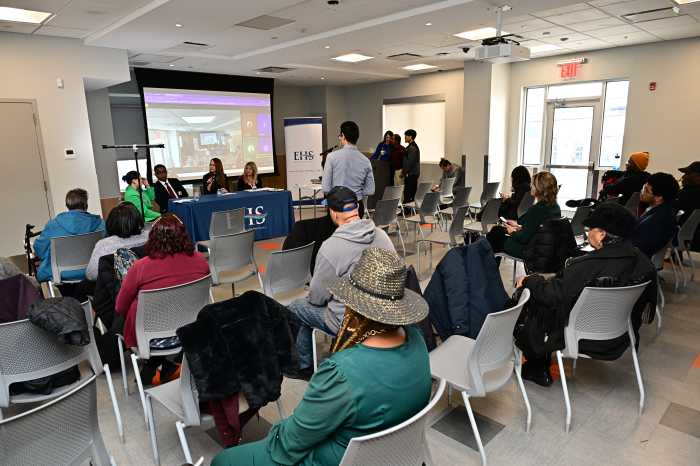Updated Nov. 30, 10:50 a.m.
After uncovering more changes to a long-disputed Whitestone development project, residents and a local elected official are calling for increased transparency from a state agency.
On Nov. 27, state Senator Tony Avella and a group of local residents met at the Waterpointe site at 151-45 Sixth Rd. to voice alarm with recent updates from state officials.
Previously an industrial zone, the nearly 12-acre site has been a topic of concern in the neighborhood for a number of years. Edgestone Group LLC, the site’s current owner, purchased the land in 2012 for $11 million and originally sought to build 97 two-family townhouse homes and nine additional single-family houses at the site. However, the developers changed their plans to 52 single-family homes after protests from the community.
Currently, Edgestone is working to remediate the site — which is covered with toxic soil — under the oversight of the state’s Department of Environmental Conservation (DEC) through the voluntary Brownfield Cleanup Program. The program is meant to “encourage private-sector cleanups of brownfields and to promote their redevelopment as a means to revitalize economically blighted communities,” according to the DEC website.
In late September, Community Board 7 received an “Explanation of Significant Difference” fact sheet from DEC informing them that the city agency has modified the cleanup agreement with developers. After inspecting the developer’s remediation work, DEC determined that the site is slated to achieve a “Track 4 restricted residential cleanup” instead of the initially agreed upon “Track 2 residential cleanup.”
Board members who noted that the new Track 4 designation restricted the developer’s ability to build the agreed upon single-family homes reached out to the city agency with their concerns. The DEC issued a revised sheet two days later, omitting the “single-family housing is prohibited” language.
Still, according to Avella, the community was not involved in the discussion to allow these “significant and detrimental changes to the remediation plan.”
“Using an inappropriate fill could have serious repercussions for whoever ends up living at the site and could restrict how homeowners are allowed to use their own property,” the lawmaker said. “The community board and Whitestone as a whole seem to have been kept in the dark about recent significant changes to this remediation plan, but today we are demanding that DEC give us the respect we deserve and be transparent about what has happened.”
Kim Cody, the president of the Greater Whitestone Taxpayers Civic Association, told reporters that the change “falls directly on [DEC].”
“[The DEC] should have had inspectors on this site when this soil was being brought in and it should have been stopped immediately,” Cody said.
According to the DEC, records of the DEC’s findings and project plans are available at the nearby Whitestone Library. However, lifelong Whitestone resident Robert LoScalzo claims the newest records at the site are about two years old.
The site was originally purchased for $25 million in 2005 by developer Bayrock Group, who later went bankrupt after they were fined by DEC for transporting toxic soil into the already contaminated site.
Under the current plans, developers are required to install a minimum two-foot cover in the ground, with a demarcation barrier between the fill and the cover. This segment of the project is expected to be completed by the end of this year.
A sub-slab depressurization system (SSD) system will also have to be installed in each new building erected on the lot. The mechanism will read for any harmful active vapors released into the air.
A spokesperson for DEC told QNS that the state agency has communicated “on several occasions” with both Avella’s office and Community Board 7 about the site’s remediation. The proposed 52-unit subdivision is still “an acceptable re-use of this site” under the Track 4 cleanup plan due to the developers plans to create a “single, certifying entity” to oversee the entire site.
“DEC has modified the remedy for this site to allow Track 4 restricted residential use,” the spokesperson said. “Restricted residential use provides for common ownership or a single owner/managing entity of the site. DEC requires that development at this site be consistent with the approved remedy.”
If the developer fails to meet the requirements of a restricted residential use site under DEC’s law and regulations, they will be subject to administrative enforcement, penalties, and potential revocation of the certificate of completion, the spokesperson also said.







































